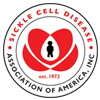Trusted Resources: Evidence & Education
Scientific literature and patient education texts
Outcomes of an Emergency Department Observation Unit–Based Pathway for the Treatment of Uncomplicated Vaso-Occlusive Events in Sickle Cell Disease
source: Annals of Emergency Medicine
year: 2020
authors: Matthew Lyon, Lashon Sturgis, Richard Lottenberg, Marin E. Gibson, Jonathan Eck, Abdullah Kutlar, Robert W. Gibson
summary/abstract:Study objective:
This was a prospective, pre-post, 13-year observational study documenting the multiyear implementation of an observation unit sickle cell pathway for patients with uncomplicated vaso-occlusive events.
Methods:
The sickle cell pathway begins with rapid triage to identify patients with uncomplicated vaso-occlusive events for immediate transfer to the observation unit and initiation of patient-controlled analgesia followed by repeated evaluations of pain and identification of other complications. Data were abstracted from the electronic medical record or observation unit database. The sickle cell pathway was initiated in April 2006. Major revisions of it were carried out in June 2009 (physician evaluation occurs in sickle cell pathway and only patient-controlled analgesia administration of medications) and October 2010 (multidisciplinary management and individual dosing).
Results:
Annual ED visits ranged between 287 and 528. The preimplementation hospital admission rate was 33% (123/368), 3-day return rate 16% (60/368), and 30-day return rate 67% (248/368). Refinements to the sickle cell pathway have resulted in a decrease in admission rate to 20% (258/1276); 3-day return rate, to 3.6% (46/1,276); and 30-day return rate, to 41% (525/1,276) for the past 3 years.
Conclusion:
The use of a sickle cell pathway for the treatment of uncomplicated vaso-occlusive events has been effective in providing rapid treatment and reducing hospital admissions. However, it was not only the intervention and its refinement that made the sickle cell pathway successful. With the Consolidated Framework for Implementation Research, it was discerned that outer setting factors of organizational commitment to the care of patients with SCD, inner setting factors of learning climate and leadership engagement, individuals, and process contributed to the success of the sickle cell pathway.
DOI: 10.1016/j.annemergmed.2020.08.007
read more
Related Content
-
Magnesium for treating sickle cell diseaseBACKGROUND: Sickle cell disease is an a...
-
Access to Care, and Emergency Department Utilization for Adults and Adolescents With Sickle Cell Disease: Ascq-Me an...Measurement of access to care and utiliz...
-
CMO Speaks: Making ED Care Better for SCD – Progress in 2023Welcome to CMO Speaks, a blog featuring ...
-
Pfizer rare disease introduces Council for Change to further help SCD patientsFollowing a report earlier thi...
-
Research Team Recognized for Organ-on-a-Chip DesignSCD is a group of genetic disorders that...
-
Sickle Cell Emergency Room Care: From Patients to Providershttps://www.youtube.com/watch?time_conti...
-
Vaso-Occlusive Pain Linked to Menstruation in Some Patients, Study FindsAcute vaso-occlusive pain is associated ...
To improve your experience on this site, we use cookies. This includes cookies essential for the basic functioning of our website, cookies for analytics purposes, and cookies enabling us to personalize site content. By clicking on 'Accept' or any content on this site, you agree that cookies can be placed. You may adjust your browser's cookie settings to suit your preferences. More Information
The cookie settings on this website are set to "allow cookies" to give you the best browsing experience possible. If you continue to use this website without changing your cookie settings or you click "Accept" below then you are consenting to this.




 +myBinder
+myBinder
